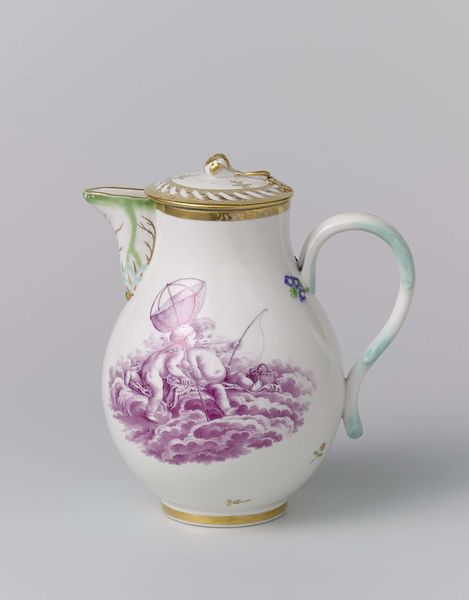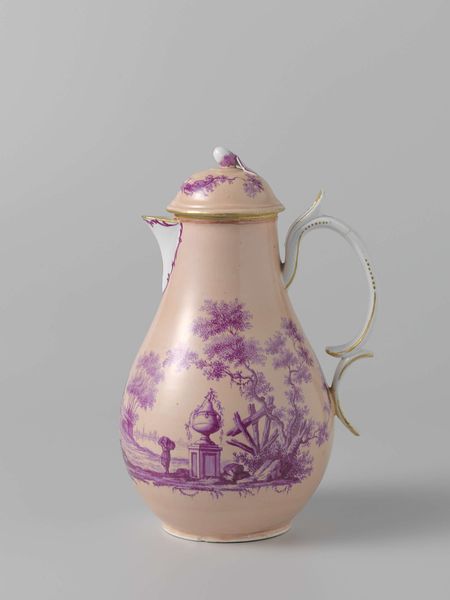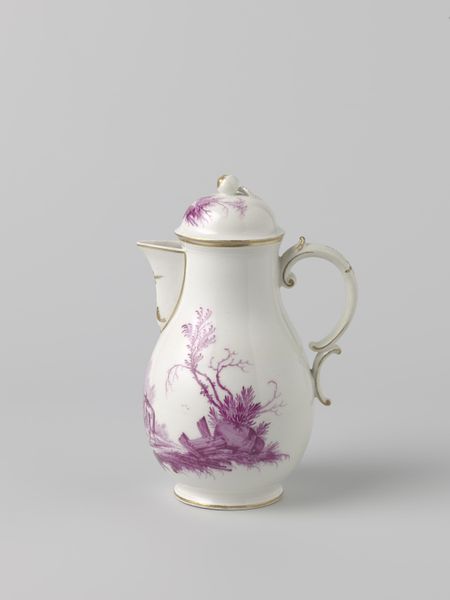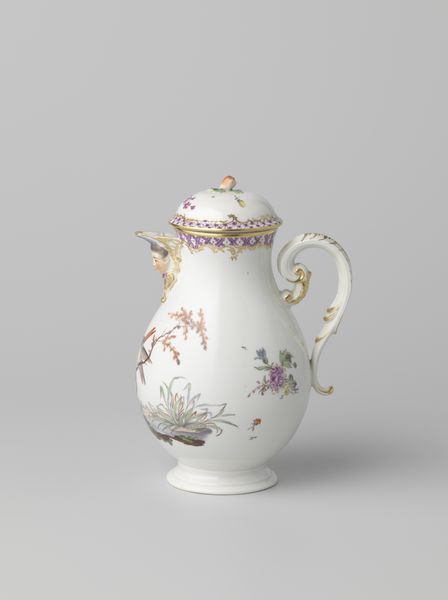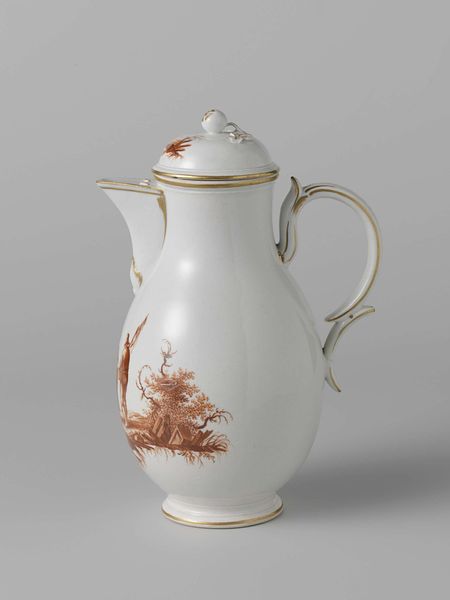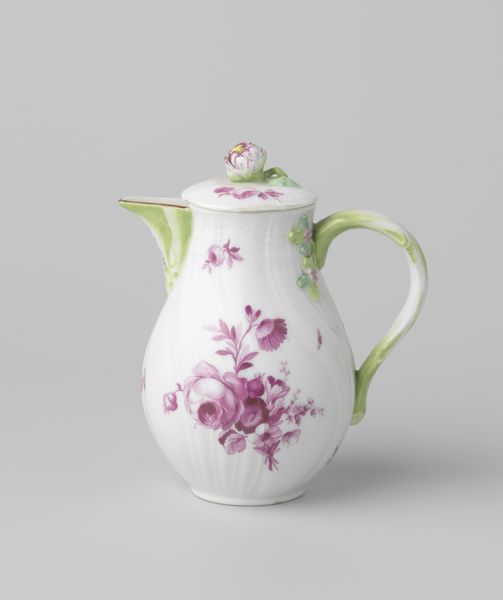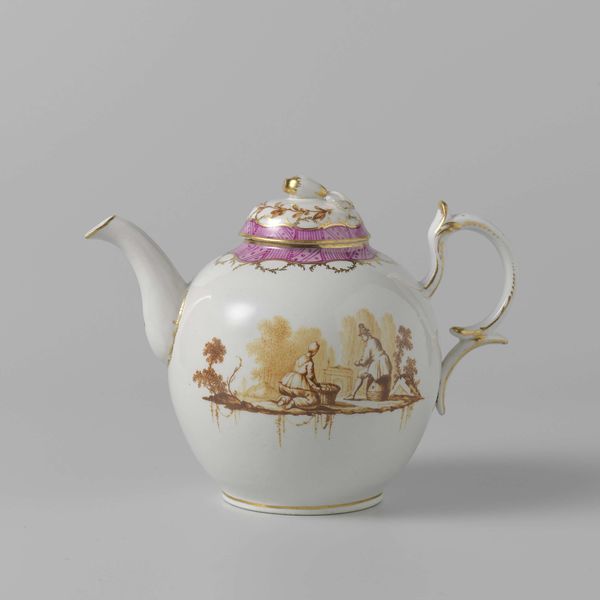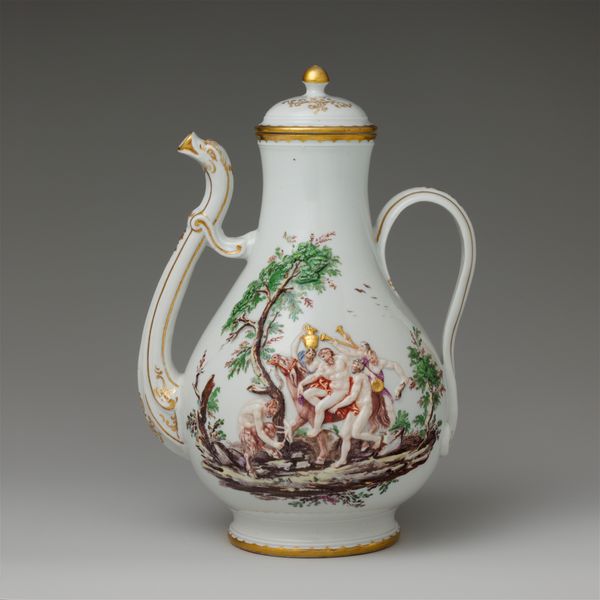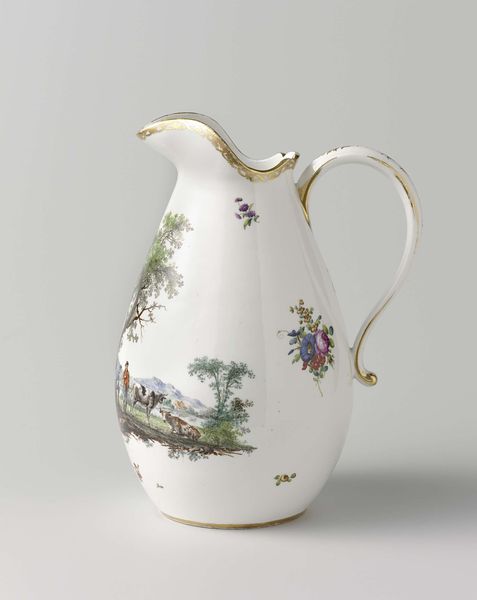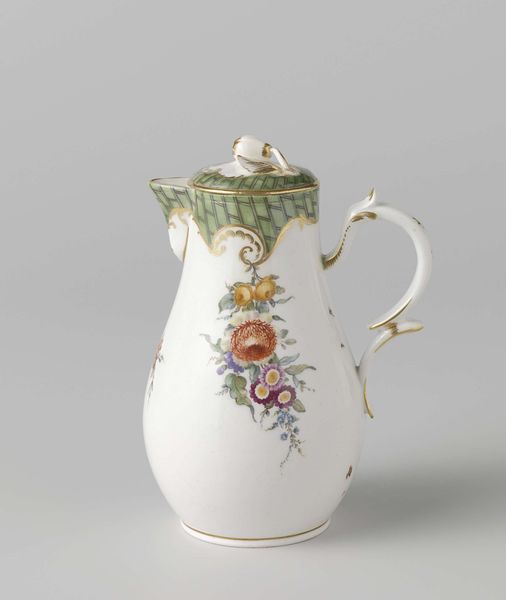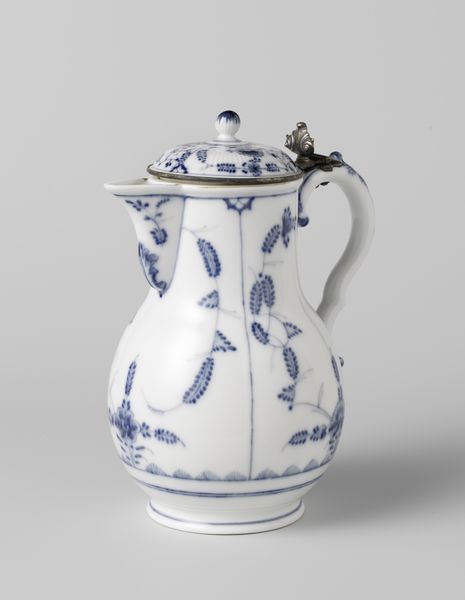
Copyright: Rijks Museum: Open Domain
Curator: Take a moment to consider this porcelain coffeepot, produced in Ansbach around 1785. The piece is adorned with delicate figuration and an allegorical scene of putti amongst clouds. Editor: It's striking! The lavender hues against the stark white porcelain are really romantic and… almost melancholic, aren't they? It’s also remarkably small! Curator: Indeed. Rococo, with its playful elegance, served as an aesthetic retreat for the aristocracy in response to social upheaval, masking their anxieties. Miniature works such as this Ansbach coffeepot embodied wealth. Editor: The cherubic figures feel at once innocent, with a more loaded context knowing of its origins. These putti become symbolic, obscuring a complicated historical landscape and real-world impact of these lavish commodities. Curator: Porcelain, by this time, was highly sought after. European factories tried to emulate the craft coming from China, with pieces like this reflecting its place as status symbols in domestic spaces, far removed from the means of acquiring resources for its production. Editor: Absolutely, its diminutive stature serves to further distance the piece and the subject from those who lack such privilege. Do you think that art could disrupt existing social structures? Curator: Rococo became synonymous with the elite; the porcelain reflects social performance during an age of revolutionary change. It's unlikely the aristocracy could reflect on their wealth in that context. Editor: So, its aesthetic appeal worked to deflect more than captivate? Curator: In many ways, yes. To its original owner, this coffeepot perhaps spoke of luxury and comfort within the sphere of domestic life and served as a source of everyday aesthetic joy. Now it speaks to us about cultural history. Editor: Now, viewing its significance gives it meaning!
Comments
No comments
Be the first to comment and join the conversation on the ultimate creative platform.

